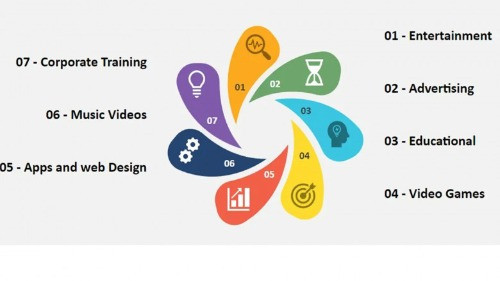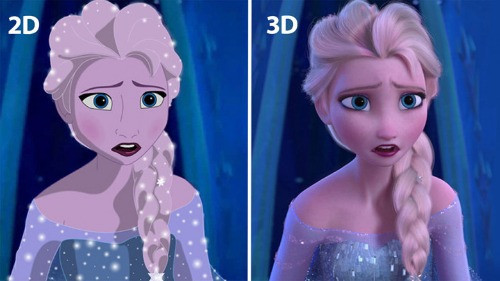views
2D animation is the art of creating movement in a flat, two-dimensional space. It involves designing characters, objects, effects, and backgrounds that are sequenced together to create the illusion of motion.
-
Frame Rate: Standard animation runs at 24 frames per second (fps). Depending on the style, animators may use every frame (24fps) or every other frame (12fps), which is called animating on “2s” and helps reduce production time.
- Traditional vs Digital: While 2D animation was traditionally hand-drawn with pencil and paper, today most 2D animation is created digitally using software like Toon Boom Harmony, Adobe Animate, or After Effects. These tools enhance efficiency while maintaining the expressive qualities of traditional animation.
Where is 2D Animation Used?
2D animation is highly versatile, making it one of the most common forms of animation across industries. Here’s where it’s typically used:

-
Entertainment: TV shows (The Simpsons, Mickey Mouse), animated films (The Lion King, Aladdin), and online content.
-
Advertising & Marketing: TV ads, product explainer videos, and social media content.
-
Education: Educational books, online tutorials, and learning apps.
-
Video Games: Animated characters, environments, and cutscenes.
-
Mobile Apps & Websites: Animated user interfaces (UI), web animations, and interactive graphics.
-
Music & Visual Art: Animated music videos and lyric videos.
-
Corporate Training: Animated training modules and motion-infographics.
2D animation’s flexibility makes it a valuable tool in entertainment, education, and business communications.
2D Animation Today
2D animation is experiencing a resurgence in various media, from TV shows and video games to mobile apps and websites. Examples of its growth include shows like Rick and Morty and games like Cuphead. Social media platforms such as Snapchat are also adopting 2D animation for short, fast-paced episodes.
Industry Demand: "Animation is used for everything online—advertising, entertainment—even if you don’t notice it at first," says Scott Claus, 2D Animation Mentor at CG Spectrum. The demand for skilled 2D animators has grown significantly in recent years, with studios and brands seeking talented artists to produce high-quality, engaging content.
Career Opportunities in 2D Animation
The 2D animation industry offers diverse career paths, ranging from feature films to video games, advertising, and beyond. It’s important to note that studying 2D animation doesn’t automatically mean becoming an “animator.” There are many specialized roles:
-
2D Animator
-
2D Animation Supervisor
-
2D Animation Director
-
2D Game Developer
-
Storyboard Artist
-
Illustrator
-
Graphic Designer
- Motion Designer
With the rapid advancement of technology, new job opportunities continue to emerge. Additionally, 2D artists can transition into 3D animation, although it can be more challenging to go in the opposite direction. Understanding the key differences between 2D and 3D animation can help guide your career decisions.
The Future of 2D Animation
2D animation is evolving with the advancement of technology. Tools like Toon Boom Harmony and Storyboard Pro have revolutionized the animation process, simulating traditional techniques but with improved efficiency. This evolution is leading to a resurgence in 2D animation across various media.
Industry Growth: As 2D animation continues to grow, demand for skilled animators will only increase. The accessibility of new tools and platforms is enabling artists to experiment with new styles and reach wider audiences.
What Is the Difference Between 2D and 3D Animation?

While 2D and 3D animation share similar stages in development and pre-production, key differences emerge during the production phase.
-
Pre-Production: Both 2D and 3D animations go through similar stages, such as design, storyboarding, expression development, and scene planning. Recruitment, contracts, and scheduling are also similar in both pipelines.
-
Production:
-
In 3D animation, digital models of characters, props, and environments are created, followed by 3D modeling, texturing, and rendering.
- In 2D animation, the focus is more on the artistry of drawing and animation, with less emphasis on constructing digital models. The process involves more hands-on work from artists, creating drawings and animating them frame by frame.






















Comments
0 comment